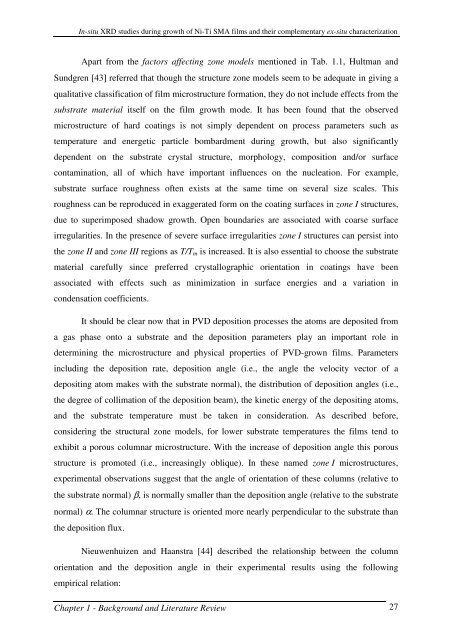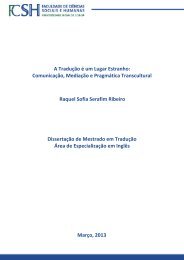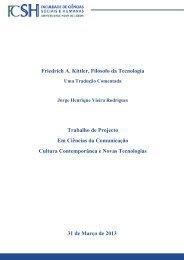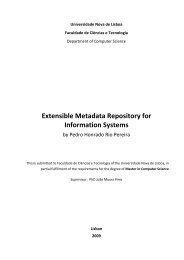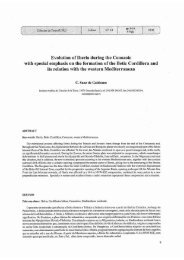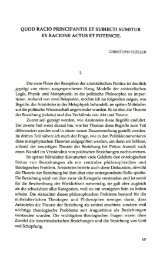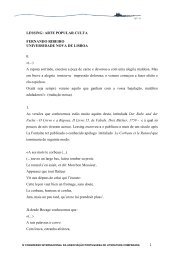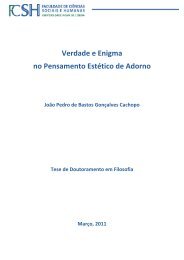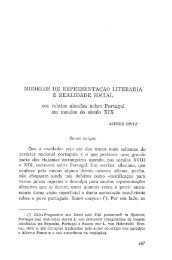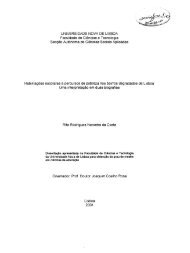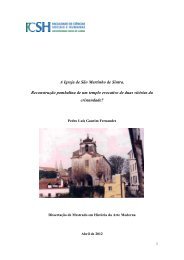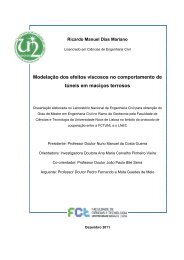PhD Thesis_RuiMSMartins.pdf - RUN UNL
PhD Thesis_RuiMSMartins.pdf - RUN UNL
PhD Thesis_RuiMSMartins.pdf - RUN UNL
You also want an ePaper? Increase the reach of your titles
YUMPU automatically turns print PDFs into web optimized ePapers that Google loves.
In-situ XRD studies during growth of Ni-Ti SMA films and their complementary ex-situ characterization<br />
Apart from the factors affecting zone models mentioned in Tab. 1.1, Hultman and<br />
Sundgren [43] referred that though the structure zone models seem to be adequate in giving a<br />
qualitative classification of film microstructure formation, they do not include effects from the<br />
substrate material itself on the film growth mode. It has been found that the observed<br />
microstructure of hard coatings is not simply dependent on process parameters such as<br />
temperature and energetic particle bombardment during growth, but also significantly<br />
dependent on the substrate crystal structure, morphology, composition and/or surface<br />
contamination, all of which have important influences on the nucleation. For example,<br />
substrate surface roughness often exists at the same time on several size scales. This<br />
roughness can be reproduced in exaggerated form on the coating surfaces in zone I structures,<br />
due to superimposed shadow growth. Open boundaries are associated with coarse surface<br />
irregularities. In the presence of severe surface irregularities zone I structures can persist into<br />
the zone II and zone III regions as T/T m is increased. It is also essential to choose the substrate<br />
material carefully since preferred crystallographic orientation in coatings have been<br />
associated with effects such as minimization in surface energies and a variation in<br />
condensation coefficients.<br />
It should be clear now that in PVD deposition processes the atoms are deposited from<br />
a gas phase onto a substrate and the deposition parameters play an important role in<br />
determining the microstructure and physical properties of PVD-grown films. Parameters<br />
including the deposition rate, deposition angle (i.e., the angle the velocity vector of a<br />
depositing atom makes with the substrate normal), the distribution of deposition angles (i.e.,<br />
the degree of collimation of the deposition beam), the kinetic energy of the depositing atoms,<br />
and the substrate temperature must be taken in consideration. As described before,<br />
considering the structural zone models, for lower substrate temperatures the films tend to<br />
exhibit a porous columnar microstructure. With the increase of deposition angle this porous<br />
structure is promoted (i.e., increasingly oblique). In these named zone I microstructures,<br />
experimental observations suggest that the angle of orientation of these columns (relative to<br />
the substrate normal) β, is normally smaller than the deposition angle (relative to the substrate<br />
normal) α. The columnar structure is oriented more nearly perpendicular to the substrate than<br />
the deposition flux.<br />
Nieuwenhuizen and Haanstra [44] described the relationship between the column<br />
orientation and the deposition angle in their experimental results using the following<br />
empirical relation:<br />
Chapter 1 - Background and Literature Review 27


